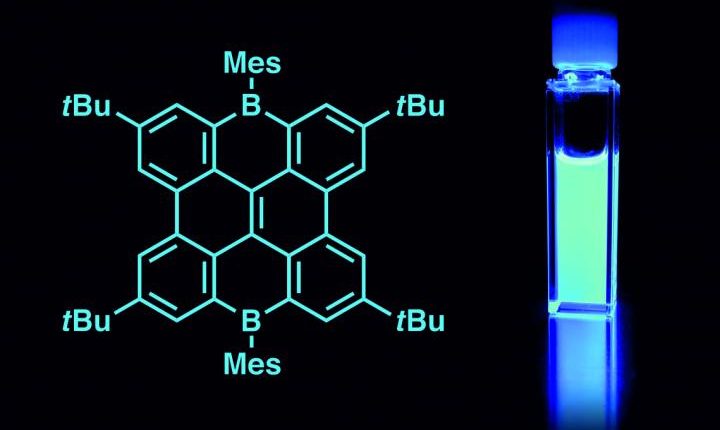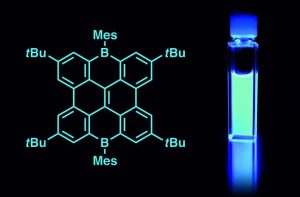
Luminescent Blue Boron Could Be Future Of Portable Electronic Devices
Thanks to major advances in organic electronics, previously silicon-dominated semiconductor technology is rapidly evolving. Customized organic molecules are making way for the production of lightweight, mechanically flexible electronic components that can be perfectly adapted to individual applications.
Chemists at Goethe University in Germany have now developed a new class of organic luminescent materials by introducing boron atoms into the molecular structures.

Carbon in the form of graphite conducts the electrical current in a similar way that metal does and since graphene is two-dimensional, it has extremely attractive optical and electronic properties. By using graphene, the researchers created countless benzene rings fused to form a honeycomb structure. Sections of this structure, called nanographenes or Polycyclic Aromatic Hydrocarbons (PAHs), are an important basis of organic electronics.
“For a long time, efforts were largely focused on affecting the properties of nanographenes by chemically manipulating their edges”, said Prof. Matthias Wagner of the Institute for Inorganic and Analytical Chemistry at the Goethe University. “However, in recent years, researchers have been increasingly capable of also modifying the inner structure by embedding foreign atoms in the carbon network. This is where boron assumes crucial significance.”
A comparison of the new boron-containing nanographenes with the analogous boron-free hydrocarbons proves that the boron atoms have a decisive impact on two key properties of an OLED luminophore: the fluorescence color shifts into the highly desirable blue spectral range and the improved capacity to transport electrons. For now, boron-containing PAHs can only be used a little at a time since most of the exponents are sensitive to air and moisture. “This problem does not occur with our materials, which is important with regard to practical applications” said Valentin Hertz, who synthesized the compounds within the scope of his doctoral dissertation.
Hertz and Wagner anticipate that materials such as the graphene flakes they have developed will be particularly suitable for use in portable electronic devices: in smartophone film displays or even foldable large-scale screens that can save space.
For more information visit Goethe University’s website.
